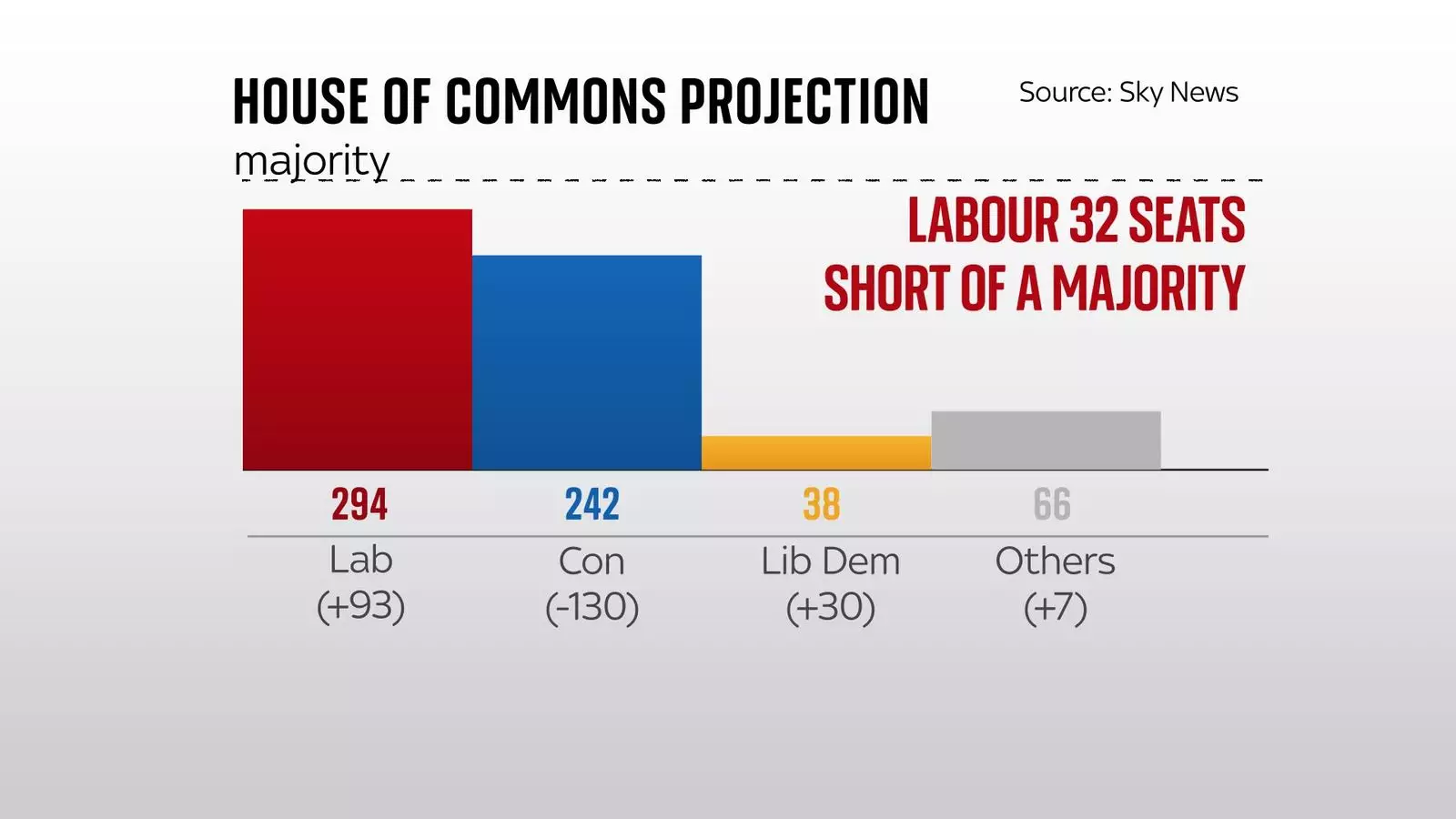Recent analysis by Sky News has projected voting figures from two million council wards to estimate the outcome of the upcoming general election. According to their projections, Labour is expected to increase their vote share from 33% in 2019 to 35%, making them the largest party in the House of Commons. However, despite this gain, Labour is predicted to fall short of an overall majority.
Party Performances
The projections also indicate that the Liberal Democrats are on track to increase their vote share to 16%, a five percentage point rise from the previous election. Historically, the Liberal Democrats tend to perform better in local council elections compared to parliamentary elections. Additionally, other parties such as the Greens, Reform, and independents are projected to collectively hold 22% of the vote.
Seat Projections
When applying these projected changes in vote share to the newly drawn parliamentary constituencies, Labour is estimated to win 294 seats, surpassing the Conservatives. However, Labour still falls short of gaining a majority by 32 seats. On the other hand, the Conservatives are projected to experience a significant drop in seats, falling from 372 to just 242 seats. The Liberal Democrats, on the other hand, are expected to see a rise in their seat count from eight to 38.
While the projections provide valuable insights, there are some anomalies in individual constituencies where the local vote count does not align with the uniform swing analysis. Examples such as Aldershot and Plymouth Moor View, where Labour “wins” despite a different swing suggestion, highlight the complexities of predicting election outcomes. Conversely, constituencies like Blackburn and Oldham West, which were “won” by independents in the local vote count, present challenges for Labour in maintaining their seat tally.
The growing trend of supporting smaller parties in local elections is also reflected in the projections, with a significant portion of the vote going to other parties. The shift away from Labour towards independents in certain regions further emphasizes the evolving landscape of voter behavior in the UK.
The projections paint a complex picture of the upcoming general election, with Labour making gains but facing challenges in securing a majority. The rise of smaller parties and independents adds an element of unpredictability to the electoral landscape, making it essential for all parties to adapt to changing voter preferences.


Leave a Reply